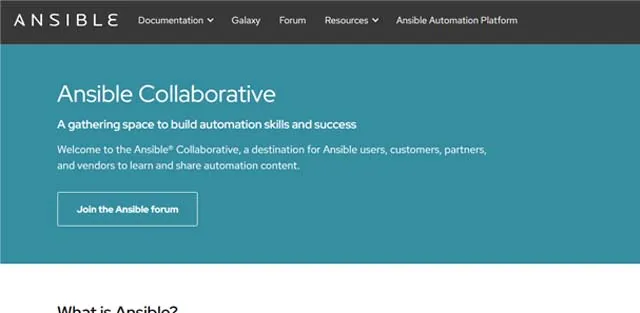
The Ansible Automation Platform by Red Hat is a robust solution that automates IT processes like system setup, application deployment, and policy management. Fresh details from the Red Hat site showcase its new self-managed deployment on Microsoft Azure, offering enhanced flexibility for cloud users. It also includes an updated Ansible Basics course (DO007) with free video lessons to guide newcomers in mastering automation. This tool stands out for its scalability and strong security, serving IT crews globally.
What is Ansible Automation Platform?
The Ansible Automation Platform, created by Red Hat, is an advanced tool for automating IT tasks such as system setup, software deployment, and policy management. It’s designed for IT professionals and businesses seeking to save time and increase productivity. Built on the foundation of the open-source Ansible project, it enhances security, scalability, and support for handling intricate IT systems. With rising interest in Ansible Automation Platform pricing and Red Hat Ansible Automation, it’s evident that organizations globally are adopting this solution to streamline their workflows.
Features: Key Features and Their Benefits
Ansible Automation Platform offers a range of capabilities that make IT automation simple and efficient. Here are the highlights:
- Policy as Code Automation: Automatically enforces rules and standards across systems, a boon for those looking to automate policy as code with Ansible.
- Event-Driven Automation: Reacts instantly to changes using Event-Driven Ansible, cutting down on manual tasks.
- Scalability: Handles small projects or vast networks effortlessly, perfect for Ansible Automation Platform for enterprise needs.
- Simple Playbooks: Lets users automate tasks with easy scripts, no deep coding required—ideal for writing first Ansible playbook.
- Robust Security: Provides a secure, enterprise-level setup, addressing Ansible Automation security priorities.
- These tools help teams work faster, avoid mistakes, and focus on their core goals.
Use Cases: Real-World Examples
Ansible Automation Platform proves its worth in everyday situations. Here are a few ways it’s used:
- Server Setup: Businesses turn to Ansible Automation for servers to configure numerous servers quickly and uniformly.
- Software Rollouts: Teams use Ansible for application deployment to update applications across cloud systems without hassle.
- Rule Enforcement: IT staff rely on Ansible Policy as Code to automate checks, ensuring systems meet required standards.
- These examples demonstrate how Ansible tackles common IT hurdles, making it a trusted automation option.
Implementation: How to Get Started
Getting going with Ansible Automation Platform is easy and approachable:
- Check the Guides: Head to Red Hat Ansible documentation for step-by-step instructions and resources.
- Test It Out: Begin with the Ansible Automation Platform trial to try it free and see its potential.
- Write a Playbook: Use create Ansible playbook to automate a basic job, like adding software.
- Expand Usage: Apply Ansible enterprise solutions to integrate it fully into your operations.
You don’t need expert skills—just a desire to make IT tasks smoother.
Pros and Cons
Pros:
- User-friendly, even for those exploring Ansible for beginners.
- Cuts down time and human errors.
- Adapts to any scale with Ansible scalability.
- Backed by a helpful community and solid enterprise support.
Cons:
- Setting it up might take effort for larger systems.
- Full features come with a cost, as noted in Ansible Automation Platform pricing.
- Lacks a strong visual interface for some users.
 Ansible pricing
Ansible pricing
- Price
- Contact
 Review & Ratings of Ansible
Review & Ratings of Ansible
 Summary
Summary
The Ansible Automation Platform transforms how IT teams and companies manage tasks, enforce rules, and improve performance. Its straightforward playbooks and ability to grow with your needs make it a standout choice. Whether you’re researching best IT automation tools or curious about how Ansible works, this platform offers real benefits. Ready to make IT easier? Take the first step today—try the free trial or visit redhat.com for more details.





